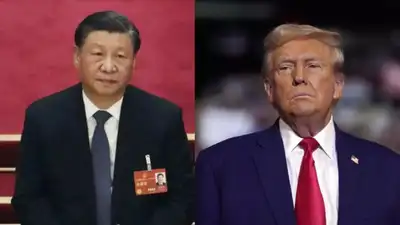China’s Ministry of Commerce has confirmed it is evaluating the possibility of entering tariff negotiations with the United States, following overtures from Washington aimed at easing escalating trade tensions. The announcement comes as both nations grapple with the economic fallout from a series of tit-for-tat tariff hikes that have disrupted global markets and strained bilateral relations.
A spokesperson for the ministry stated that Beijing has taken note of multiple communications from senior US officials expressing a willingness to engage in dialogue over tariff issues. However, the spokesperson emphasized that any negotiations must be grounded in mutual respect and sincerity, cautioning against coercive tactics. “Saying one thing but doing another, or even attempting to engage in coercion and blackmail under the guise of talks, will not work on the Chinese side,” the ministry warned.
The current impasse stems from the Trump administration’s imposition of a 145% tariff on Chinese imports, a move that Beijing has decried as unilateral and in violation of World Trade Organization rules. In retaliation, China has levied tariffs of up to 125% on US goods, targeting sectors such as agriculture, technology, and energy. These measures have led to significant disruptions in trade flows, with both countries experiencing economic strain.
Despite the hardline rhetoric, there have been subtle signs of flexibility. China has reportedly exempted certain US products, including pharmaceuticals and microchips, from retaliatory tariffs, while the US has made limited concessions on electronics. These actions suggest a potential willingness on both sides to de-escalate tensions, provided that substantive negotiations can be initiated.
The appointment of Li Chenggang as China’s new international trade negotiator adds a fresh dynamic to the situation. Li, who previously served as China’s Permanent Representative to the WTO, is known for his pro-free trade stance and extensive experience in international negotiations. His elevation to this role indicates Beijing’s intent to approach forthcoming discussions with a blend of firmness and pragmatism.
Market reactions to the possibility of renewed talks have been cautiously optimistic. US stock futures rose, with major indices such as the S&P 500 and Dow Jones posting gains. Investors are hopeful that a resolution to the trade dispute could stabilize markets and alleviate the economic uncertainty that has prevailed in recent months.
However, significant obstacles remain. China has made it clear that any negotiations must be predicated on the US demonstrating genuine commitment to resolving the dispute, including the rollback of existing tariffs. Beijing has also expressed concern over the US’s recent actions, such as the closure of the “de minimis” exemption, which previously allowed low-value Chinese goods to enter the US without tariffs.
The broader geopolitical context further complicates the path to reconciliation. The US has tightened export controls on advanced technologies, particularly in the semiconductor and artificial intelligence sectors, citing national security concerns. China views these measures as attempts to hinder its technological advancement and has responded by seeking to diversify its trade partnerships and reduce reliance on US technology.
In this climate of mutual distrust, both nations face pressure to find a diplomatic solution that addresses their respective concerns. For China, securing relief from punitive tariffs is essential to sustaining economic growth and maintaining domestic stability. For the US, resolving the trade dispute could bolster its economic standing and provide political capital ahead of upcoming elections.




 India mulls sanctions and FATF move against Pakistan
India mulls sanctions and FATF move against Pakistan 